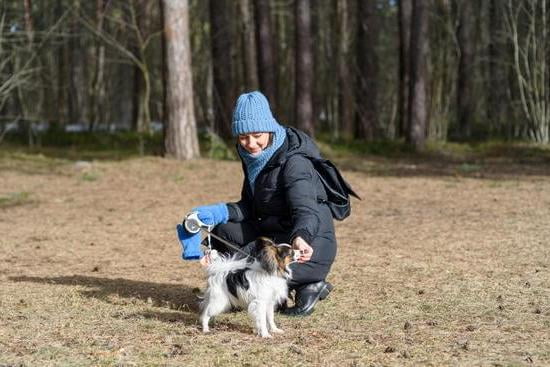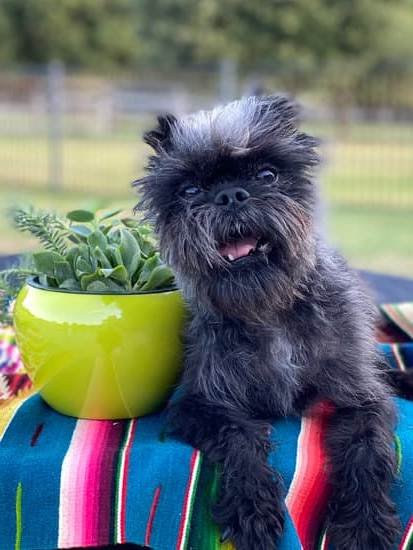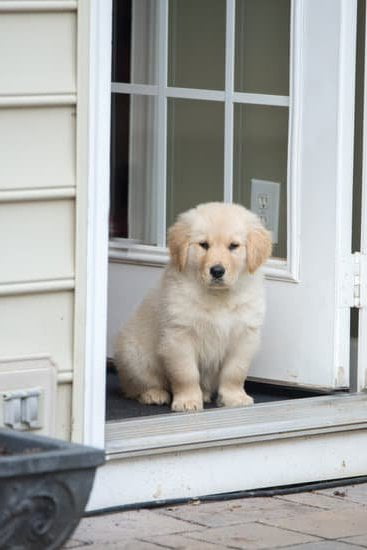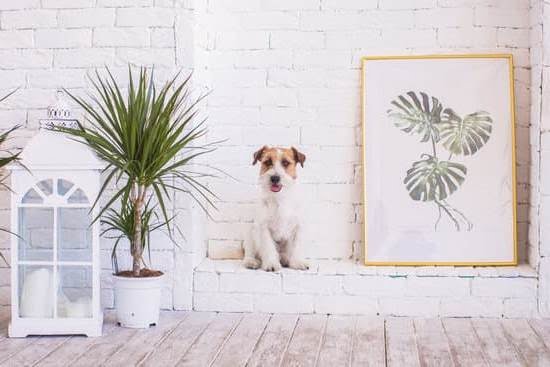Are you struggling with a dog that suffers from separation anxiety? Training your furry friend to manage this condition is crucial for their well-being and your peace of mind. Whether you have a new puppy or an older dog, understanding and addressing this issue is essential for a harmonious relationship with your pet.
Dog separation anxiety training is the key to helping your pet cope with being alone. This article will explore the signs, causes, and impact of separation anxiety on dogs and their owners.
We will also delve into effective training techniques, creating a safe environment, managing separation anxiety while you’re away, seeking professional help, and sharing success stories and case studies. By the time you finish reading, you will have a comprehensive understanding of how to support your beloved pup through their struggles.
Separation anxiety in dogs can manifest in various ways, often causing stress and disruption in both the dog’s life as well as in the household. Understanding these symptoms is crucial in identifying whether your pet is suffering from separation anxiety. Moreover, recognizing the root causes of this condition is essential in addressing the underlying issues that contribute to it. In the following sections, we will discuss how to identify signs of dog separation anxiety and explore its potential causes.
Signs and Symptoms of Dog Separation Anxiety
Many dog owners may not realize that their beloved pets can suffer from separation anxiety. This condition occurs when dogs become distressed or anxious when they are separated from their owners. It’s important for dog owners to be able to recognize the signs and symptoms of separation anxiety in their pets so that they can seek proper treatment and training techniques.
Some common signs and symptoms of dog separation anxiety include:
- Excessive barking or howling when left alone
- Destructive behavior, such as chewing on furniture or other items
- Pacing or restlessness while the owner is away
- Toileting accidents inside the house
- Attempts to escape or break free from confinement
It’s important for dog owners to understand that these behaviors are not the result of disobedience or spite, but rather a manifestation of the dog’s distress at being separated from their owner. Recognizing these signs and symptoms is the first step in addressing and treating separation anxiety in dogs.
There are also physical signs that may indicate a dog is experiencing separation anxiety, such as excessive drooling, panting, or trembling while their owner is preparing to leave. Being aware of both behavioral and physical indicators can help dog owners identify if their pet is suffering from separation anxiety, prompting them to seek appropriate interventions, such as professional dog separation anxiety training.
Causes of Dog Separation Anxiety
There are several potential causes of separation anxiety in dogs, and understanding these triggers can be crucial in addressing the issue effectively. One common cause is a change in routine or environment, such as moving to a new home or being left alone for longer periods than usual.
Traumatic experiences, such as being abandoned or neglected, can also contribute to separation anxiety in dogs. Additionally, genetics may play a role, as certain breeds are more prone to experiencing separation anxiety than others.
Furthermore, lack of proper socialization during puppyhood and excessive attachment to their owners can also lead to separation anxiety in dogs. Dogs that have been excessively pampered and constantly attended to may struggle to cope when left alone. It’s important for dog owners to be aware of these potential causes so that they can take proactive steps in preventing or addressing separation anxiety in their pets.
In some cases, it may be necessary to seek the assistance of a professional trainer or behaviorist who specializes in dog separation anxiety training. These experts can help identify the specific causes of your dog’s anxiety and develop a customized training plan to address the underlying issues. By understanding the root causes of separation anxiety, dog owners can take appropriate measures to provide their pets with the support and care they need.
| Potential Causes | Examples |
|---|---|
| Change in routine or environment | Moving to a new home |
| Traumatic experiences | Being abandoned or neglected |
| Lack of proper socialization | Excessive attachment to owners |
Impact of Dog Separation Anxiety on Dogs and Owners
Dog separation anxiety can have a significant impact on both dogs and their owners. For dogs, the stress and fear associated with being left alone can lead to destructive behaviors, excessive barking, and even self-harm. This can result in physical injuries to the dog, as well as damage to the owner’s property. Additionally, the emotional toll on the dog can be severe, leading to increased anxiety and a diminished quality of life.
For owners, dealing with a dog suffering from separation anxiety can be overwhelming and distressing. Constantly worrying about their pet’s well-being while they are away can cause immense guilt and stress. The financial burden of repairing damage caused by the anxious behavior of their dog can also take a toll on pet owners. Furthermore, the disruption caused by a distressed dog can strain relationships with neighbors or landlords if the barking or destruction impacts others in close proximity.
Addressing this issue is crucial for both the dog’s well-being and the peace of mind of their owners. Implementing proper dog separation anxiety training is essential for creating a harmonious environment for both pets and their caregivers.
To address these concerns, there are several strategies that can be implemented to help ease separation anxiety in dogs:
- Gradual desensitization: This involves slowly acclimating your dog to being alone through short periods of separation at first.
- Providing enrichment activities: Leaving toys or treats that provide mental stimulation while you are away can help distract your dog from your absence.
- Implementing calming aids: There are products such as pheromone diffusers or calming music designed to reduce stress in dogs that may help alleviate separation anxiety.
- Seeking professional help: Consulting with a veterinarian or animal behaviorist who specializes in dog separation anxiety training can provide personalized guidance for managing this challenging issue.
By addressing the impact of separation anxiety on both dogs and their owners and implementing effective training techniques, it is possible to improve the well-being of pets while alleviating stress for their caregivers.
Training Techniques for Dog Separation Anxiety
Training a dog with separation anxiety can be a challenging and time-consuming process, but with patience and consistency, it is possible to help them overcome their fears. One of the most effective techniques for addressing separation anxiety in dogs is desensitization and counter-conditioning.
This involves gradually getting your dog used to being alone by starting with short absences and gradually increasing the time you are away. Pairing this with positive experiences, such as giving them a special treat or toy when you leave, can help change their negative association with being alone.
Another training technique for dog separation anxiety is teaching them a “cue” that indicates you are leaving, such as picking up your car keys or putting on your coat. By repeatedly practicing this cue without actually leaving, your dog can start to understand that these actions do not always result in you being gone for a long time. This can help reduce their anxiety when they see these cues in the future.
It’s important to also provide plenty of mental and physical stimulation for dogs with separation anxiety, as this can help reduce their stress levels and keep them occupied while you’re away. Engaging toys, puzzle feeders, and interactive games can help keep their minds busy and prevent destructive behaviors caused by anxiety.
In addition to these techniques, it’s crucial for owners to stay calm and relaxed when leaving or returning home. Dogs are highly attuned to human emotions, so displaying anxious behavior yourself can exacerbate your pet’s separation anxiety. Being patient, consistent, and providing lots of positive reinforcement during training sessions will be key to successfully helping your dog overcome separation anxiety.
Creating a Safe and Comfortable Environment for Dogs With Separation Anxiety
Establish a Safe Space
One effective way to alleviate separation anxiety in dogs is by creating a designated safe space for them. This could be a cozy corner in the living room or a quiet room where your dog feels secure. Fill this space with comforting items such as blankets, toys, and clothing that carries your scent. This will help your dog feel more at ease when you’re not around.
Provide Mental Stimulation
Dogs with separation anxiety can benefit from mental exercise to keep their minds occupied while you’re away. Interactive toys, puzzles, or treat-dispensing devices can distract them from feelings of anxiety and loneliness. Engaging your dog’s mind with stimulating activities can help reduce their stress levels and make the time apart more bearable.
Keep a Consistent Routine
Consistency is key when it comes to managing separation anxiety in dogs. Stick to a regular daily routine when it comes to feeding, walking, playtime, and departure times. A consistent schedule helps dogs feel more secure and less anxious because they know what to expect each day. It also creates predictability, which can be comforting for an anxious dog.
By implementing these strategies and creating a safe haven for your dog with separation anxiety, you can greatly improve their well-being while you’re away. Making thoughtful adjustments to their environment can help them feel more secure and relaxed, ultimately making training more effective in the long run.
Tips for Managing Dog Separation Anxiety While You’re Away
Establish a Consistent Routine
One of the most effective ways to manage dog separation anxiety while you’re away is to establish a consistent routine for your furry friend. Dogs thrive on predictability, so having a set schedule for feeding, walks, and playtime can provide them with a sense of security and stability. When they know what to expect during the day, they are less likely to feel anxious when you leave.
Provide Interactive Toys and Puzzles
Interactive toys and puzzles can help keep your dog’s mind engaged while you’re away, which can alleviate their anxiety. Consider giving them treat-dispensing toys or puzzle feeders that require them to work for their food. This not only provides mental stimulation but also helps distract them from their worries about being alone.
Use Calming Aids
There are various calming aids available that can help manage dog separation anxiety. Calming pheromone diffusers, sprays, or collars can create a soothing environment for your pet. Additionally, music specifically designed for dogs can also have a calming effect. Some pet owners have found success in using these aids to reduce their dog’s stress levels when left alone.
By implementing these tips and techniques for managing dog separation anxiety while you’re away, you can help alleviate your canine companion’s distress and create a more peaceful environment for both your pet and yourself. Remember that patience and consistency are key when training a dog with separation anxiety, and seeking professional help may be necessary in severe cases.
Seeking Professional Help for Dog Separation Anxiety Training
Professional help for dog separation anxiety training often involves personalized, one-on-one sessions with a qualified trainer or behaviorist. These professionals will assess your dog’s specific situation and develop a customized training plan to gradually desensitize them to being alone. This may involve techniques such as counterconditioning, desensitization exercises, and implementing calming tools to help your dog cope with their anxiety.
In addition to working directly with your dog, seeking professional help for dog separation anxiety training can also provide you with the support and guidance you need as a pet owner. Trainers and behaviorists can offer valuable advice on creating a safe and comfortable environment for your dog, as well as tips for managing their anxiety while you’re away.
They can also educate you on how to read your dog’s body language and recognize signs of distress, allowing you to provide better care for your furry companion.
Ultimately, seeking professional help for dog separation anxiety training demonstrates a commitment to improving the well-being of your beloved pet. With the expertise and guidance of a trained professional, you can work towards helping your dog feel more secure and relaxed when left alone, leading to a happier and healthier life for both you and your furry friend.
Success Stories and Case Studies of Dog Separation Anxiety Training
I recently worked with a client who was struggling with their dog’s severe separation anxiety. The dog would exhibit destructive behavior, such as chewing furniture and scratching at doors, every time the owner left the house. Through implementing a training plan specifically designed for dog separation anxiety, we were able to make significant progress in reducing the dog’s distress when left alone.
By using desensitization and counterconditioning techniques, we gradually helped the dog feel more comfortable being alone. This involved starting with very short periods of separation and gradually increasing the duration over time. We also provided the dog with interactive toys and puzzles to keep them occupied and distracted while alone. Within a few months, the dog’s destructive behavior had significantly decreased, and they were able to stay home alone without any issues.
Another success story involves a rescue dog who had been surrendered multiple times due to their severe separation anxiety. Through consistent training and an understanding of the underlying causes of the anxiety, we were able to help this dog overcome their fears. By creating a safe and comfortable environment for the dog, implementing training techniques, and providing plenty of mental stimulation, we were able to transform this once-anxious pup into a confident and well-adjusted companion.
These success stories highlight the importance of implementing effective dog separation anxiety training techniques. With patience, dedication, and professional guidance, it is possible to help dogs overcome their separation anxiety and live happy, fulfilled lives alongside their owners.
Conclusion
In conclusion, it is crucial for dog owners to recognize and address separation anxiety in their pets. Understanding the signs, symptoms, and causes of dog separation anxiety is the first step in providing the necessary care and support for these animals. It is important to remember that dogs with separation anxiety are not misbehaving on purpose, but rather experiencing distress and fear when left alone.
Proper training techniques, such as desensitization and counter-conditioning, can help alleviate dog separation anxiety. Creating a safe and comfortable environment for dogs with separation anxiety, including providing interactive toys and comforting scents, can also contribute to their well-being. Additionally, seeking professional help for dog separation anxiety training can provide valuable guidance and support for both the dog and its owner.
Success stories and case studies of dog separation anxiety training serve as a testament to the positive impact that proper care and training can have on these animals. With patience, dedication, and the right approach, it is possible to help dogs overcome their separation anxiety and lead happier, healthier lives. By prioritizing the importance of proper training and care for dogs with separation anxiety, we can make a positive difference in the lives of these beloved pets.
Frequently Asked Questions
How Do You Break a Dog With Separation Anxiety?
Dealing with a dog with separation anxiety requires patience and consistency. Gradually getting the dog used to being alone, using positive reinforcement, and creating a soothing environment can help break their anxiety.
Can Dogs Be Trained Out of Separation Anxiety?
Yes, dogs can be trained out of separation anxiety through desensitization and counterconditioning. This involves gradually exposing the dog to being alone for short periods, rewarding calm behavior, and slowly increasing the time apart.
Does Separation Anxiety in Dogs Go Away?
In many cases, separation anxiety in dogs can improve or even go away with the right treatment and training. However, it may require ongoing management and support to keep the anxiety at bay, especially in more severe cases.

Welcome to the blog! I am a professional dog trainer and have been working with dogs for many years. In this blog, I will be discussing various topics related to dog training, including tips, tricks, and advice. I hope you find this information helpful and informative. Thanks for reading!





